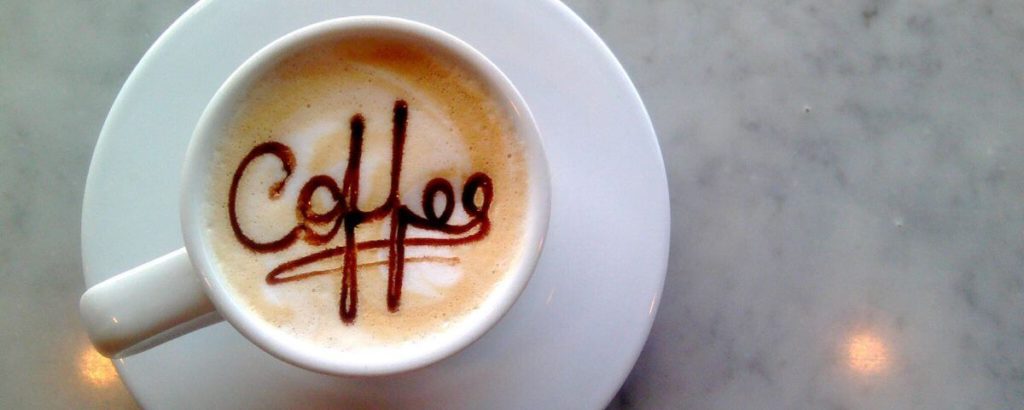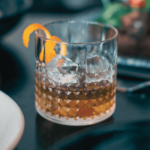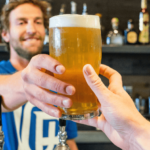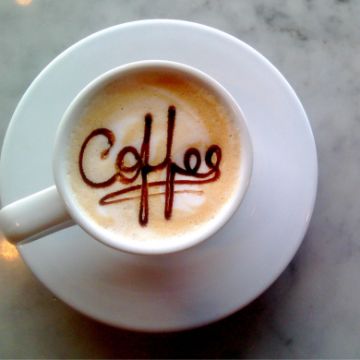
Ultimate Guide to Spanish Coffee Drinks
EVERYTHING ABOUT COFFEE IN BARCELONA AND THE REST OF SPAIN
Did you know in Spain we drink 599 cups of coffee per person per year? And that Spain is the country with the highest number of café per person in the entire world? 175 to be exact!
Spanish drink coffee any time of the day. We have it for breakfast. We have it as a midday break. They have it to finish off lunch. We can still have it in the mid-afternoon. There’s people who have it even after dinner – and not even decaf either!
When I worked as a server at the café of a local theater, there were as many people that would order coffee during the break and before the evening show started, as people ordering beer or wine.
Coffee in Spain is a form of socializing. If a Spaniard tells you “let’s meet for a coffee”, the main message isn’t that they need caffeine. They are telling you to go seat with them at a café and talk about life over a cup of something. Sure, most of the time it’ll be a cup of coffee, but you don’t break any social rule by ordering something else.
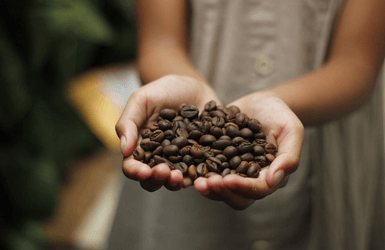
So today I want to give you a tour around the world of coffee in Spain. We'll learn about its history, the different types of coffee in Spain, the correct way of ordering coffee in Spain, we'll decipher the mystery of what "torrefacto coffee roasting" means, the local brands of coffee... Mmmmm... I can already smell it! Can you?
Let's start with some history of coffee in Spain...
The origins lost in time
According to a legend, a shepherd from Abyssinia called Kaldi realized his goats got overexcited after eating the red berries from a bush. He decided to try them, and he made a tea with them.
That night he had trouble sleeping. When he explained that in his village, the local imam thought it’d be a great way to keep people awake during the night prayers. And that’s how coffee was discovered.
In any case, in the middle ages a large part of Spain was dominated by the Muslims. And it is said that Turkish immigrants brought in a drink called bunchun, coava or café. However people stopped drinking it after the Reconquista when Spain was Christianized.
When coffee came back to stay
La Fonda de San Sebastián, in Atocha (Madrid). In 1781 opened Café de F. Martinelli in Barcelona. And by 1802 there were over 20 cafés in Cadiz already.
The Dutch were the first to start planting coffee in their colonies oversees, but soon the Spanish Empire copied the idea, expanding it around Central and South America. In those times, coffee was still made in a pot: hot water, grinded coffee, then drained.
Interestingly, coffee wasn’t a popular drink yet: hot chocolate was. Coffee wouldn’t become mainstream until the end of the 1800’s. Traditional Italian coffee makers wouldn’t arrive to Spain until the mid-1900’s, and espresso machines started first arriving after WW2.
What is torrefacto coffee roasting?
So he decided to try roasting the coffee beans along with sugar, In the process the sugar melts coating the beans, creating a protective layer around them. Eventually the sugar burns, leaving the bean shiny and dark. This is the torrefacto coffee roasting system.
Contrarily to what you would think, the flavor of torrefacto coffee is not sweet at all: it is bitter, very strong and almost charred. During the difficult years following the Spanish Civil War, though, it became very popular because being so strong they could reuse the grinded coffee several times. And to kill the bitterness they’d add lots of sugar and milk.
Nowadays the idea of torrefacto coffee horrifies any coffee lover. But the truth is that even if Spaniards are little by little refining their palate, torrefacto coffee is still commonly found – mostly blended with naturally roasted varieties.
Types of coffee in Spain for your daily life
1
Café solo - the "expresso" of Spain
But to be more specific, locals order it as a “café solo” – coffee “alone”. It is usually served in a small ceramic cup. And it’s not as short as the true Italian expresso: you get half the cup or a bit more than that, depending on the place.
So how do you order an expresso in Spain?
Just say you want an expresso (or a café solo) “corto” or “muy corto de café”. “Muy corto” means you want a very tiny shot, and “corto” will be something between a quarter and half the cup.
2
Americano - your black coffee in Spain
Does the Americano come with milk? No. That’s a café con leche (keep reading). If you order an Americano and then ask for milk… a good professional won’t let you see them rolling their eyes. But trust me: that’s what they’ll do as soon as they turn their back to you.
3
Cortado
Let’s say it’s like an Italian macchiato, but probably with a tiny bit more of milk. In Catalonia we call it “tallat”.
4
Café con leche - all the variants of coffee with milk
A trick to get it with more milk than coffee is to order it in a glass (café con leche en vaso). In such case, it’s usually around a third of coffee and 2/3 of milk.
In order to get a white coffee in Spain, you can order a “leche manchada” or un “café lágrima”. But these expressions are mostly heard in Andalusia and might not be understood in other areas…
I’d also avoid the terms “café manchado” and “latte macchiato” because even if they do mean the same thing, the risk of the server understanding the opposite (more coffee than milk) is too high.
The risk-free expression that everyone will understand is “café con leche muy corto de café”.
What about a cappuccino?
If ordering a cappuccino 20 years ago was an extravagance only served in fancy cafés, nowadays you can get one pretty much anywhere. However… take into account that this is not Italy: most waiters aren’t strict with the exact proportions of milk and coffee an authentic cappuccino needs to have according to Italians.
What you’ll get most of the time is a café con leche with a lot of milk foam, and if you are lucky, some cocoa powder or cinnamon on top. Only occasionally you’ll cross a barista that is able to make coffee foam drawings other than a heart (if you do, consider yourself lucky).
5
Café con hielo - iced coffee in Spain
It consists in a expresso cup filled with coffee, then a glass with one or two ice cubes. I usually order it “(café con hielo) corto de café”, because I prefer it less watery.
If you like your coffee with sugar, make sure to add it BEFORE you pour the coffee onto the ice. Otherwise the coffee will be too cold for the sugar to melt, and it’ll just sink to the bottom of the glass without sweetening your drink…
In Catalonia we call it “cafè amb gel”. And in Valencia you’ll find it as “Cafè del Temps” or “Café del Tiempo”, but with the addition of some lemon rind or a slice of lemon.
Actually, in a tiny bar in Barcelona called Dole, during the Summer months they have something similar that they call “cafè fred” (cold coffee). They keep a jar of coffee with lemon and ice in the fridge, and they serve it on a small glass. But I haven’t seen it anywhere else.
ATTENTION: De expression “del tiempo” is used in other areas of Spain to refer to “room temperature” drinks. But outside of Valencia using it for coffee will result in confused looks from the waiter…
Special Spanish coffee drinks
1
Cafe Bombón o Biberón
It’s extremely sweet, so I usually order it “con poca leche condensada” so there’s less condensed milk on it. In Catalonia and Valencia it’s often called “biberón”, that means baby bottle. And in the Canary Islands it’s called a “cortado condensada”. You might also find it as “goloso” (sweet tooth), but then it comes topped with whipped cream.
There are also alcoholic versions, mostly in Andalucía, that incorporate liquor, brandy or rum. look out for “barraquito”, “asiático” or “belmonte” in the café menu.
2
Carajillo and similar drinks
And “que ara guillo” evolved into “carajillo”, the name of the drink. Another version says that alcohol with coffee gave “corajillo” (stimulated) them. Whatever it is, carajillo is a mix of coffee with brandy or whisky, although it can be also rum or anisette. And the Spanish ladies usually prefer it with Baileys, instead.
In Mallorca it’s a reventat, and in Catalonia we call it cigaló. And in Catalonia a trifàsic is a carajillo with a dash of milk, still served in a small glass.
Curiously enough, in the Basque Country the alcohol in the carajillo is always burnt before adding the coffee. And another Catalan coffee drink that involves burnt alcohol is “Rom Cremat” (or “herbers” in Valencia), made with rum, sugar, spices (cinnamon and other), lemon rind and coffee beans.
Contrarily to the Basque carajillos, that are even served in mom and pop bars, the Catalan Cremat has to be cooked in a pot outdoors and the mixture is set in fire, then it is left to reduce. It’s a whole ritual that is usually celebrated in Havaneres song concerts and seaside village festivals, but you won’t see it served in cafes or restaurants.
3
Café Irlandés - Irish Coffee
As you might already know, it is made of whisky with one to three spoons of sugar, heated so it becomes thick enough for the coffee to float on top of it. Then it’s topped with whipped cream, and it can be sprinkled with some cocoa powder to five it a more finished touch.
4
Café vienés
5
Granizado de café
If Café Vienés is more of a winter treat, we also have coffee Summer treats. In the summer ice cream parlors, bars, cafés and restaurants in Spain sell “granizados” – slushes. Lemon and orange are the most common, followed by… you guessed it right: coffee!
It’s something you’ll order as dessert after lunch, or while socializing with friends and family seating on an outdoor terrace, or to go while you walk around a seaside village. Summertime… and the living is eeeeeasy!
6
Blanco y Negro
How to order coffee in Spain
1
Descafeinado - Decaf
A decaf coffee is a café descafeinado. A decaf cortado is a cortado descafeinado. Easy enough? Well, it’s not that simple. You might be asked “¿de sobre o de máquina?” (sachet or machine?).
Before it became easy to find decaffeinated coffee beans for expresso machines, decaf coffee was basically a cup filled with warm water or milk, and a sachet of instant decaf coffee. Eventually, decaffeinated coffee beans started being more readily available .
2
All about sweeteners
In Spain, coffee comes with white sugar by default: one sachet for expresso cup or small glass sized drinks, two for latte-sized drinks. If prefer brown sugar, asking if they have it “¿Teneis azúcar moreno?” is better than assuming they will.
The most common sweetener is sacarine, and it’s safe to assume they’ll have it. So you can order coffee “con sacarina, por favor”. Instead, stevia is not that mainstream yet, but you lose nothing for asking: “¿Teneis estevia?”.
Coffee with honey?
So I texted my friends in Madrid, the Basque Country and Andalusia, as well as two of my tour guides whose families are from Galicia. I think that covers a quite large chunk of Spain to be safe. Well, none of them had ever heard of coffee with honey being anything common in their areas as well.
Of course there can be the odd person that prefers honey to other sweeteners, and most cafés are likely to have a pot of honey somewhere. So if you order coffee with honey you’ll get that: a coffee and a pot of honey so you can add it to taste.
But believe me: you won’t be having a typically Spanish coffee: it’ll just be your personal choice.
3
The milk
Type of milk
The default milk used in cortados, cafés con leche and the like is full fat milk. Some places carry skimmed milk, so ask “¿teneis leche desnatada?” to find out. Just be warned that if you happen to order a decaf coffee with skimmed milk, you’ll earn yourself a smirk: that’s what Spanish people ironically call a “desgraciado” – a miserable coffee.
Some places also carry soy milk (leche de soja), and less frequently oat milk (leche de avena), almond milk (leche de almendra) or rice milk (leche de arroz).
Milk temperature
Sometimes you might be asked: “¿Cómo quieres la leche?”. They are asking you about its temperature. And your answer should be “caliente” (hot), fría (cold or probably just room temperature) or “templada” or “tebia” (a mix of hot and cold milk). “Natural” means room temperature in Catalonia, but in the rest of Spain they say “del tiempo”.
Prefer a milk jar?
4
The coffee proportions
Do you need to be quite precise about the amount of coffee you get? Order your coffee “corto de café” to get less coffee than average for that type of coffee and more milk. “Muy corto de café” would mean very little coffee.
In the other hand, “largo de café” (or “muy largo”) means you want more coffee than average, and less milk. These requests don’t mean you’ll get a larger or smaller glass size: you get the same size glass, with different coffee/milk proportions.
5
The container
This applies mostly to café con leche, but you can try with other types of orders too. Café con leche is usually served on a large ceramic cup, but sometimes people prefer it on a glass (the size of a glass of water, more or less).
There’s two reasons for that. One is that coffee in a crystal glass will cool faster – which is convenient if you are in a hurry. The other is that often you’ll get more milk on a glass than on a cup. Ask for your coffee “en vaso, por favor”, if that’s what you need.
What about coffee to go?
Spaniards don’t really drink coffee walking down the streets. We seat or at least stand by the counter, take our coffee shot and go.
Coffee brands in Spain
Did you know Europe is in general too cold to grow coffee beans? What means even Italians need to import their beans to make their famous coffee! But are you aware that the Canary Islands in the Western Coast of Africa belong to Spain? And that it’s warm enough to grow coffee there?
So yes, there’s actually coffee from Spain! In fact, the only coffee grown in the entire Europe… They grow Arabica Typica, one of the types of coffee original from Ethiopia. However, the production is really tiny and hard to find outside of the islands. What means the vast majority of the coffee brands in Spain import their beans. Let’s discuss them!
1
In bars and restaurants
The brands that you are most likely to see in Spanish cafés and restaurants vary depending on the region that you are visiting, but there are some that are more commonly found everywhere.
The most popular Spanish coffee brands are La Estrella, Saimaza, Baqué, Templo, Brasilia, Bonka, Santa Cristina, Catunambu, Tupinamba, Unic, Bou, Dibar, Novell… As for Italian coffee brands in Spain, you’ll often find Segafredo, Illy and Lavazza. There’s also Spanish café chains that carry their own brands: Bracafé, Jamaica, Il Caffé di Francesco…
As for international chains, you can find Starbucks in most large cities in Spain but it’s not mainstream: you don’t find them in every corner like in the US.
2
Supermarket brands
Many of the brands I mentioned before can also be found in supermarket aisles. I must mention Marcilla and Fortaleza as other famous Spanish coffee brands, together with Nescafé that also owns the Dolce Gusto capsules.
And talking about capsules, there’s of course Nespresso capsules and other compatible brands such as L’Or and Starbucks. And Tassimo is another coffee brand with its own capsule system.
Now test what you’ve learned…
“Un café con leche descafeinado corto de café, la leche de avena muy caliente y con estevia. Para llevar, por favor.” And that’ll earn you a hatred look from your server. LOL.
Now you officially know how to order coffee in Barcelona and the rest of Spain!
Marta
MORE BARCELONA TIPS FOR YOU:
SHARE WITH YOUR TRAVEL MATES
RESEARCHING FOR A TRIP IS TIME-CONSUMING…
Need more inspiration?
Our 100% FREE Barcelona Collection will give you everything you need to organize the trip of your lifetime to Barcelona.
BEST INSIDER TIPS FROM THE PROS!
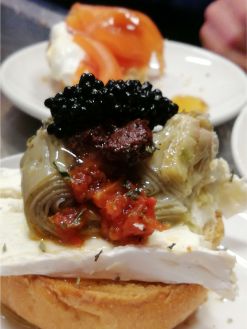
Last update on 2024-04-19 / Affiliate links / Images from Amazon Product Advertising API

